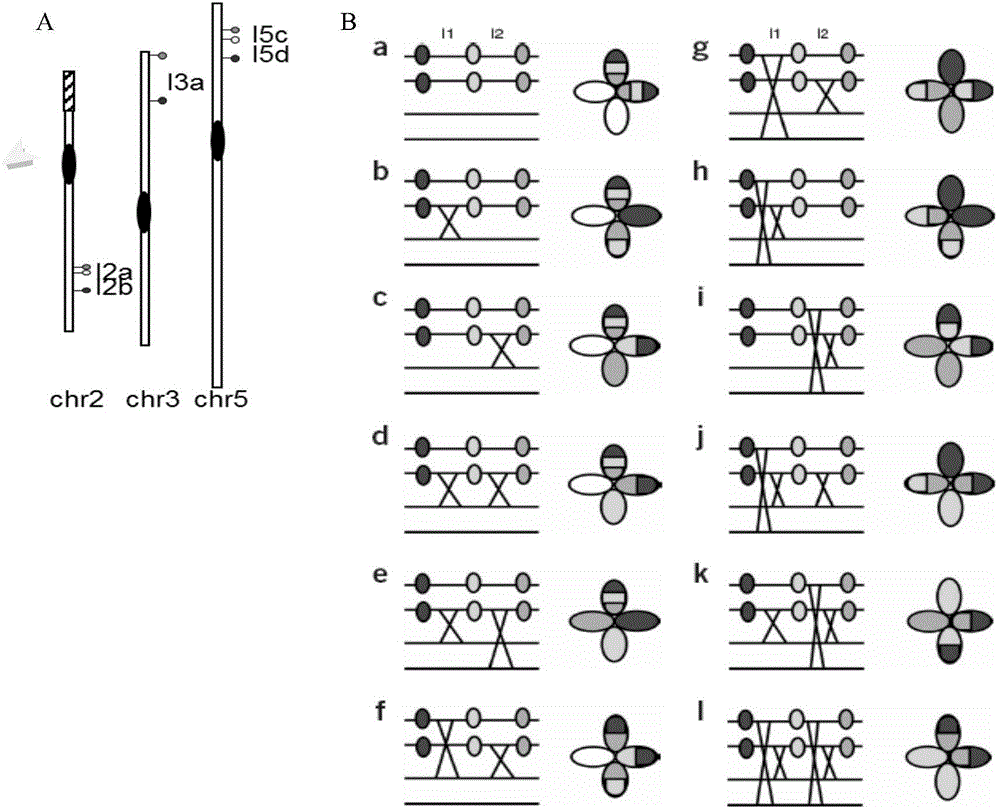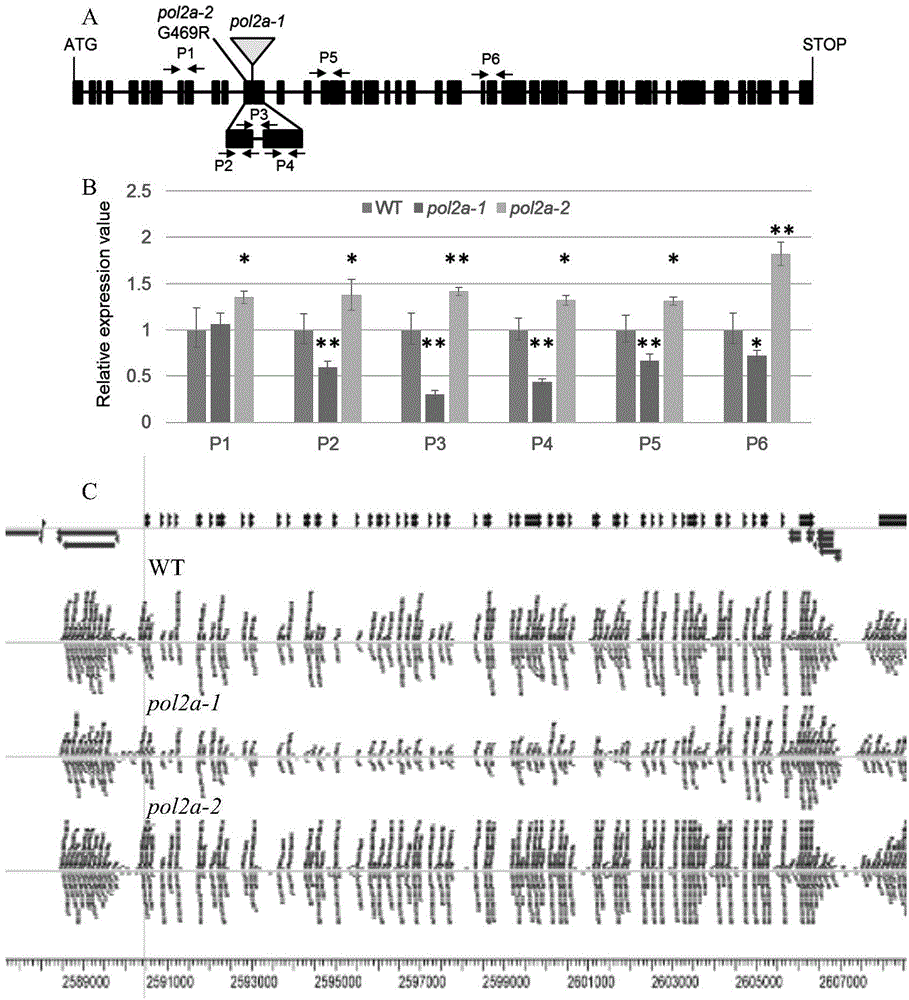Function and application of arabidopsis thaliana POL2A gene in reduction division recombination
A meiosis, Arabidopsis technology, applied in the field of genetic engineering
- Summary
- Abstract
- Description
- Claims
- Application Information
AI Technical Summary
Problems solved by technology
Method used
Image
Examples
Embodiment 1
[0061] Example 1 Planting, hybridization, transformation and genotype identification of Arabidopsis thaliana
[0062] 1. Planting of Arabidopsis
[0063] After surface disinfection of Arabidopsis seeds (75% ethanol, 30s; wash three times with sterile water, 60s / time); sow in solid 1 / 2 MS medium under sterile conditions. Cultivate in a light incubator (22°C, 16h light / 8h dark); about 10 days later (two true leaves grow) transplant the greenhouse ( figure 2 ).
[0064] 2. Hybridization of Arabidopsis
[0065] First remove the dew-white flowers of the plants identified by the genotype, and emascate the three outermost flowers. After one to two days, observe the stigma of the emasculated flower. If the stigma presents white fluff and a shiny liquid substance appears, it proves that the stigma is suitable for pollination at this time. Smear the pollen of the male parent on the stigma, and you can see the yellow powdery substance on the stigma. To be on the safe side, you can ...
Embodiment 2
[0074] Example 2 Alexander red staining of mature pollen
[0075] Inflorescences of Arabidopsis thaliana were fixed overnight in Carnot's fixative at room temperature. Peel off the flowers that have bloomed, take the flowers that have yellow anthers and have not yet cracked, and immerse them in a small PCR tube filled with Alexander red staining solution. The staining time depends on the room temperature (RT>30°C, T<30min; 15°C<RT<30 ℃, 2h<T<4h; RT<10℃, T<12h). After the dyeing is completed, peel off the anthers, remove impurities, add a small amount of dye solution, cover the slides, press gently, and after microscopic examination, seal the slides with nail polish and store at -20°C.
[0076] Recipe of Alexander red staining solution: 95% ethanol 10mL, malachite green (1% ethanol solution) 1mL, double distilled water 50mL, glycerin 25mL, phenol 5mL, chloral hydrate 0.5g, 1% acid fuchsin 5mL , 0.5 mL of 1% Orange G, 1 mL of glacial acetic acid (ALEXANDE., 1969). The total...
Embodiment 3
[0078] Example 3 Tetrad analysis
[0079] Take the inflorescence of Arabidopsis thaliana and fix it overnight at room temperature, rinse it with tap water 2-3 times, peel off the flowers with yellow anthers, take the outermost 1-2 flowers of the inflorescence on a glass slide, add a small drop of water, and peel off the flowers. After the anthers, remove the dregs, then add a drop of water, then gently pinch the anthers with tweezers, or squeeze the pollen mother cells out of the chamber with a needle tip, and spread them on a glass slide, let them air dry naturally, add a drop of alkaline After staining with magenta for 2-3 minutes, add a cover slip and examine under the microscope.
[0080] Unlike normal tetrads in the wild type, a large number of polytids were seen in the mutant ( image 3 B), where pol2a-1 and pol2a-2 The proportions of producing polymorphs were: 36% and 49.6% ( image 3 C). right pol2a-1 According to the classification of abnormal tetrads produ...
PUM
 Login to View More
Login to View More Abstract
Description
Claims
Application Information
 Login to View More
Login to View More - R&D
- Intellectual Property
- Life Sciences
- Materials
- Tech Scout
- Unparalleled Data Quality
- Higher Quality Content
- 60% Fewer Hallucinations
Browse by: Latest US Patents, China's latest patents, Technical Efficacy Thesaurus, Application Domain, Technology Topic, Popular Technical Reports.
© 2025 PatSnap. All rights reserved.Legal|Privacy policy|Modern Slavery Act Transparency Statement|Sitemap|About US| Contact US: help@patsnap.com



